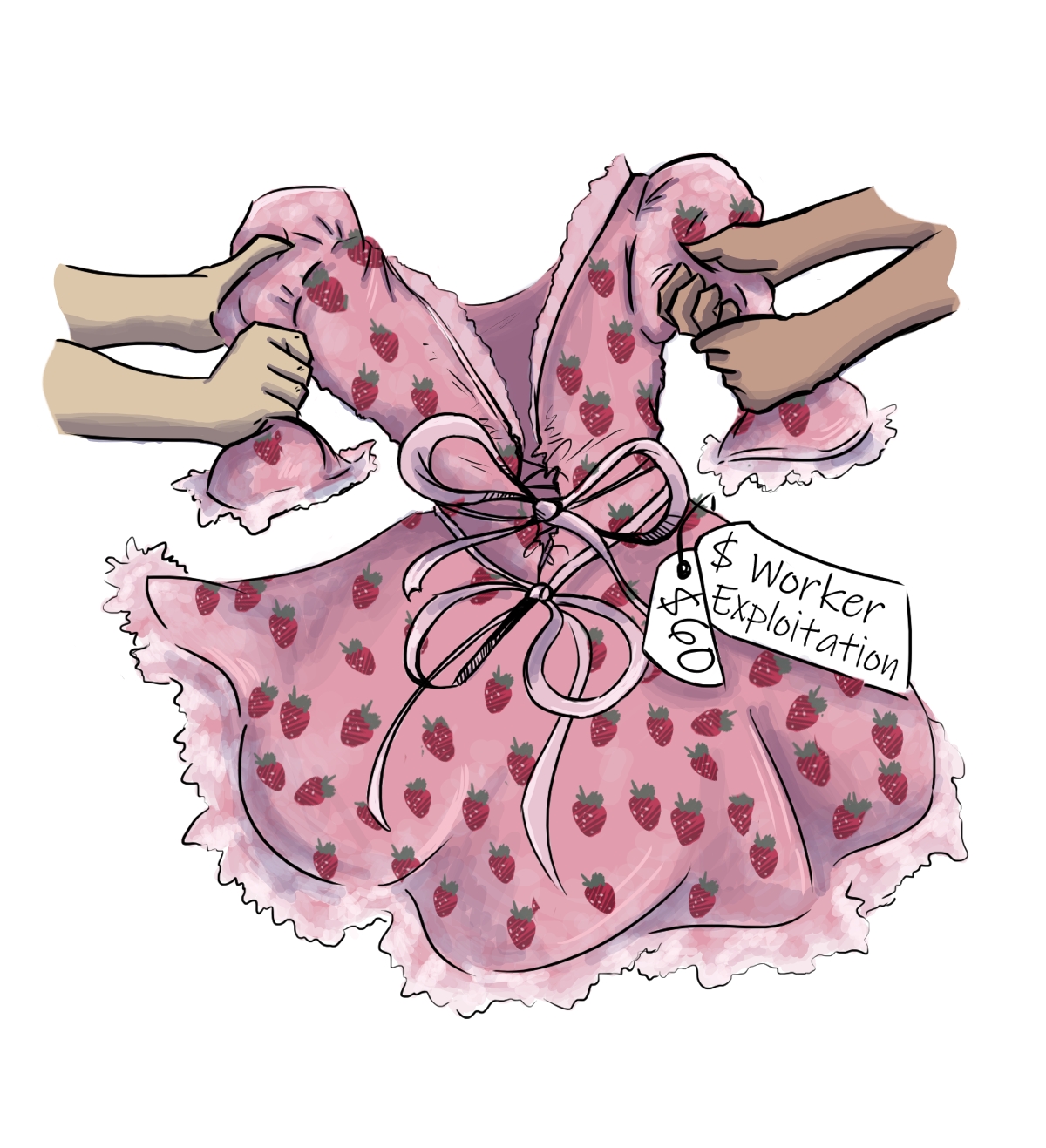Why you probably shouldn’t buy that strawberry dress knock-off
When pictures and videos of a pink, frothy tulle dress covered in sparkly strawberries with puffy sleeves and ruffled hems started going viral, the internet understandably let out a collective squeal. People wanted to know where to get it, who made it, and most importantly: does it come in black?
And then people realized it was $650 CAD.
Just as quickly as the strawberry dress took TikTok and Instagram by storm, knock-offs started springing up all over the internet — and people have been buying them. These knock-offs tend to cost somewhere between $20 and $60 and vary wildly in quality. Many listings fraudulently use the photos from the website of the dress’s original designer, Lirika Matoshi, and are direct copies of Matoshi’s product.
Some fans of the dress who can’t afford it defend these knock-offs and the people who buy them, accusing Matoshi of classism for selling it at a price which is inaccessible to many people. Fans of the dress who can afford it have posted glowing reviews and slammed the knock-offs. And many fans have been left somewhere in the middle, without $650 burning a hole in their pocket but unsure about buying imitations. For people in a wide range of tax brackets, the strawberry dress has sparked a lot of conversation about clothing, fashion, and what it means to buy a piece of clothing today.
Historically, clothing was expensive. This makes sense when you think about what actually goes into making any garment: fibres have to be harvested, spun into threads, and woven into fabric, which is dyed, cut, and finally sewn – and this is to say nothing of other notions like needles, pins, buttons, and lace. Cheap, borderline disposable clothing is a modern result of mechanization, mass production — and worker exploitation.
Costuming YouTuber Karolina ?ebrowska estimates that the materials alone for the dress — if Matoshi is using a high-quality tulle and a comfortable lining fabric — would cost about $285 USD out of its $490 USD price tag. According to ***Medium, the strawberry dress is manufactured in Kosovo, Matoshi’s home country, at a factory Matoshi owns with her sister, where all of their employees are paid a living wage; all of their fabrics are also sourced from within Kosovo. Factor in the cost of owning a factory, insuring a company, pattern development, marketing, and all the other overhead costs consumers don’t see, and $650 CAD begins to seem like a reasonable price for a well-made, avant-garde dress.
I’m not going to tell you you’re a bad person for buying a strawberry dress knock-off. It’s unfair that ethical consumption — or, as close to it as we can get under capitalism — is only really accessible to the rich. It’s understandable to want the dress — it’s adorable, whimsical, and seems to look good on everyone. And it’s not like the money you might spend on a knock-off is getting snatched out from under Matoshi, since most consumers who would buy a knock-off could never afford a designer dress anyway.
However, there is a difference between buying fast fashion and buying a knock-off of a dress made by a small designer, who is still manufacturing and selling said garment. High fashion and designer concepts eventually trickle down to fast fashion; anything that is sold at Zara or Forever 21 is probably, to some extent, the product of art theft. But Matoshi’s design is being blatantly copied and reproduced — many listings use Matoshi’s own photos of the real dress and end up sending customers a garment that is nothing like what is advertised.
Knock-off manufacturers are capitalizing on the success of an independent designer’s work solely by being more willing to exploit garment workers and trick customers. And while Matoshi’s prices may be high because of her ethical practices, not all expensive brands operate the same way. Many high-end brands are not transparent about their labour practices and manufacture garments in countries where exploitation is common, such as Bangladesh, India, and the United States. To directly undercut designers like Matoshi is to undercut the few brands that appear to be trying to produce clothing responsibly.
“But I want it” is not a good enough reason to choose to do the wrong thing. Many of us sometimes have to resort to fast fashion; we need clothes for work or school, we don’t all have body types or lifestyles that allow us to find what we need at thrift stores, and we have other places where our money needs to go. It’s okay to not have $650 for a dress; what’s not okay is needlessly choosing to support people who profit off of others’ art by exploiting workers and deceiving customers, and who make the fashion industry worse.
Illustration: Elyssa English/ The Cascade


